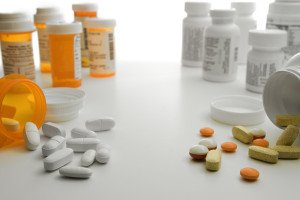The US FDA’s proposed rule on Generic Drug Labeling: Explained
The wait is over. In a recent announcement, the US FDA has asserted that the proposed rule of labeling pertaining to generic drugs will be released in July 2016. The much-anticipated rule is expected to ensure that utmost importance would be given to the patient safety while securing the rights of generic drug manufacturers. Before mulling over how the proposed rule would affect the generic manufacturers’ dependency, let us try getting some facts about the patient safety and the labeling status-quo.
The Proposed Rule and The Patient Safety: What’s in relation?
Generic Drug manufacturers, as referred in the Hatch-Waxman Act of 1984, have no authority to update or modify their own safety labels; they should implement the label as same as Reference Listed Drug (RLD). Even if they have any indication of the new drug vulnerability, they cannot update the label unless the RLD is updated.
On the other side, releasing the drug into the market without updating safety labels may put generic drug manufacturers in trouble. The big concern, in this scenario, is to figure out who is liable for not updating warning labels reflecting the new findings; the generic drug manufacturer or the new drug inventor?
Addressing the situation, the US FDA is in plans to allow/enable generic drug manufacturer to effectively communicate the adverse reactions/side effects, if any, through boxed indications on their labels, in order / so as therefore, to enhance the patient safety. However, generic manufacturers themselves would be accountable for ‘failure-to-warn’ in such cases.
Approach, Approvals and Beyond
Once the manufacturer has found some discrepancy or risk with the new drug, the need of the hour is to report the issue to the US FDA and get the approvals for necessary label changes. Following approvals, the manufacturer may update the safety in different ways:
- by submitting a New Drug Application (NDA); to reflect new indication for use
- a Prior Approval Supplement (PAS); to propose other substantial changes
- through Annual Reports; for minor changes regarding extension of expiry date
- by submitting Changes Being Effected (CBE-30 & CBE-0); for immediate moderate changes
In this scenario, generic drug manufacturers, upon finding an issue, can notify the FDA by filing CBE – 0 to make immediate changes to the label information furnishing the below details.
- the basis of the labeling change
- data pertaining to adverse events and
- related studies
Though the CBE-0 differentiates the RLD and generic drug labels temporarily, regulatory mechanisms eventually will align both the labels as per same standards.
The proposed rule, and the Pros & Cons:
Maintaining the uniformity of the label as that of an RLD might seem advantageous for generic manufacturers:
- to accelerate approval processes
- to save much of the time without any need to get involved in the rigorous tracking of safety issues
- to safeguard themselves from ‘failure to warn’ instances
But with the fact that the proposed rule itself has some serious conflicts with that of the Hatch Waxman act, the health authority has a long way in to sorting out a legal deadlock to ensure the possibility of rolling out the mandate any-time soon. Meanwhile, let us bring to you how this rule is going to affect both the end users and the generic drug manufacturers.
| Pros | Cons | |
|
Generic Drug Manufacturers |
|
Liable to ‘failure to warn’ instances, in case the US FDA approvals are missing |
|
Customers |
|
Increased product costs |
In conclusion, it is going to be a great year ahead for generic drug manufacturers and ANDA holders if at all the US FDA rolls out the proposed rule. With five months still in hands for implementation, it is recommended that they should consult a trusted global regulatory labeling partner to get hold of complete drug data in order to enhance the patient safety while securing themselves from liability concerns.





